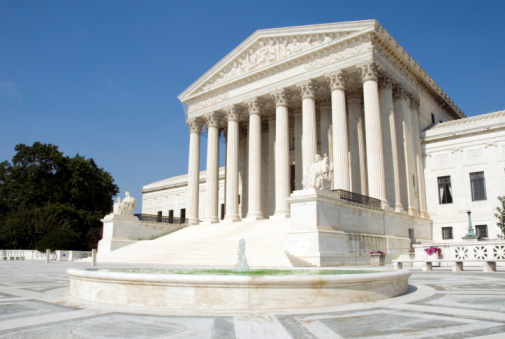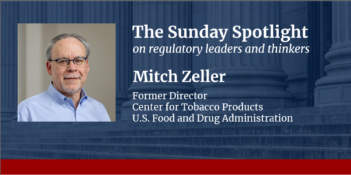
“If you had to distill the Chevron doctrine to nine words, I do not think you could do better than: ‘When I am confused, I go with the agency.'”
In and of itself, Chevron U.S.A. v. Natural Resources Defense Council was not a particularly interesting case. It dealt with a very specific, somewhat boring, technical and arcane regulation promulgated by the U.S. Environmental Protection Agency (EPA), one defining a “stationary source” under the Clean Air Act.
Here is how Justice Stevens summed up the pivotal issue of the case:
The question presented by these cases is whether EPA’s decision to allow States to treat all of the pollution-emitting devices within the same industrial grouping as though they were encased within a single “bubble” is based on a reasonable construction of the statutory term “stationary source.”
This is hardly the kind of legal question that you might think would generate a foundational principle of administrative law: the requirement that courts defer to agency interpretations of the law.
For environmental policy wonks who spend their professional lives regulating, or trying to comply with regulations, the specific question presented by Chevron is bread-and-butter stuff – but the technical aspects of regulation are less familiar for most federal judges. I think that explains, at least to some degree, why the Supreme Court decided the issue in the way that it did, and why the doctrine has grown and expanded.
Given the breadth of Article III, federal judges are generalists. When the Chevron case arrived at the Supreme Court, I do not imagine that the justices were chomping at the bit to dig into the details of the meaning of “stationary source” in the Clean Air Act.
To the contrary, several of the justices immediately headed for the exits. Chief Justice Rehnquist and Justice Marshall recused themselves from the outset, and Justice O’Connor followed them – for family reasons – during the deliberations. The six remaining justices signed on to a unanimous opinion authored by Justice Stevens.
We can get some insight into Justice Stevens’ approach from the papers donated by other justices to the Library of Congress. Apparently, Justice Stevens originally voted to affirm the D.C. Circuit, which had rejected the EPA’s interpretation of the statute and adopted its own definition of the term “stationary source.” But he subsequently changed his mind, and instead authored the decision to reverse the appeals court and defer to the EPA’s interpretation.
The papers in the Library of Congress contain several of Justice Stevens’ margin notes and are illuminating. At one point he noted that the Conference Committee report was “confusing!” In my favorite quote, Justice Blackmun recorded that Justice Stevens said, “When I am confused, I go with the agency.”
If you had to distill the Chevron doctrine to nine words, I do not think you could do better than: “When I am confused, I go with the agency.”
Now, you may ask: what’s wrong with that? After all, the subjects administered by agencies like the EPA are confusing. And when it comes to the Clean Air Act, the staff at the EPA are specialists.
The average federal judge, a generalist by necessity, may never have heard of the phrase “stationary source” before a Clean Air Act case hits his or her docket. So why shouldn’t that judge “go with the agency”? Why not defer to the technical expertise of the government’s technical specialists?
As I said at the outset, I think there are several problems with simply accepting an agency’s interpretation of the law, or its regulations, or even its decisions.
The first problem is a lack of statutory authority. When a federal court interprets or applies a federal statute, it is constrained by the language of the statute. The court must do what the statute tells it to do, and it cannot do what the statute does not tell it to do.
In Chevron, the courts were interpreting the Clean Air Act, and they were applying the Administrative Procedure Act (APA). Nothing in the Clean Air Act itself suggested that Congress preferred that the courts defer to the EPA’s interpretation of the statute because of the agency’s superior technical expertise.
As for the Administrative Procedure Act, its text, as I read it, is not just in tension with the Chevron doctrine. I would say it is downright contrary to it. Section 706 of the APA says that the “reviewing court shall decide all relevant questions of law, [and] interpret statutory provisions.” The language is clear: “[T]he reviewing court shall. . .interpret statutory provisions.”
There is nothing in the APA that suggests courts should defer to the regulatory agency. Rather, it states plainly that it is up to the courts to decide what a statute like the Clean Air Act means and does not mean. Isn’t that how administrative law is supposed to work in a constitutional system founded on concepts like “checks and balances” and “separation of powers”?
This essay is the second of a four-part series that draws on Ms. Klee’s remarks as the keynote speaker at the Penn Program on Regulation’s annual regulation dinner, held earlier this year at the University of Pennsylvania Law School.




